BREAKING NEWS 19 July 2016
Team Taniwha has won this year’s European International Submarine Race’s (eISR) overall trophy plus the trophies for most reliable sub and best non-propeller powered sub.
Although they reached speeds of 4.67 knots, they missed out on a world record time for a non-propeller single pilot sub by just 0.3 of a knot.
By day, Iain Anderson is a bioengineer at the University of Auckland, who works on artificial muscles, and Chris Walker is a bioengineering PhD student.
By night, they are part of a small team developing and building a fish-inspired human-powered submarine.
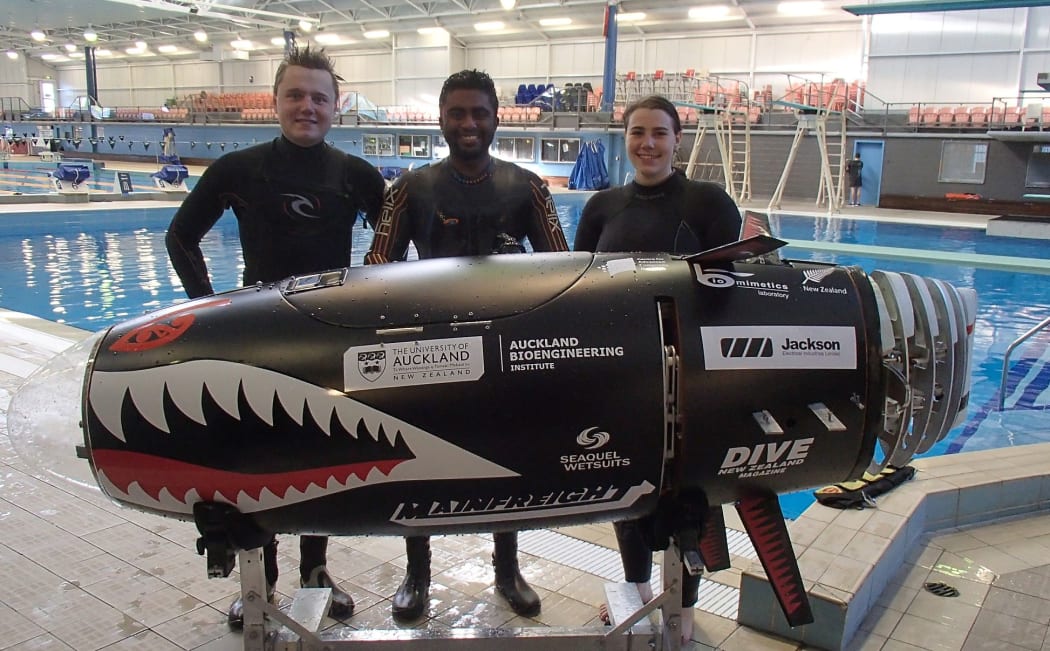
Team Taniwha, with pilot and captain Chris Walker (left), and their human-powered submarine. Photo: RNZ / Alison Ballance
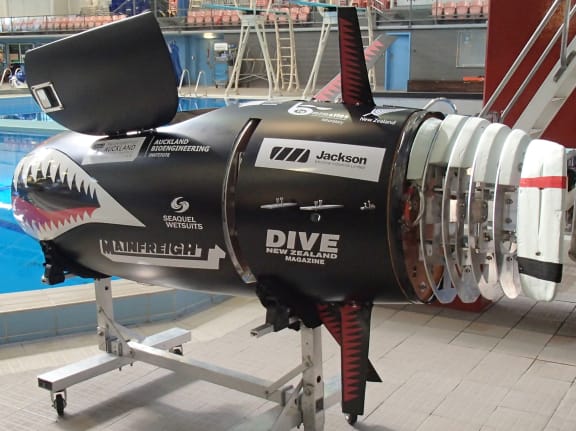
The Taniwha sub is made of fibreglass, and the pilot enters the sub through the hatch on top. The articulated tail is for steering. Photo: RNZ / Alison Ballance
Team Taniwha is one of 12 student teams - and the only one from the southern hemisphere - competing at the 2016 European International Submarine Races.
The basic rules of the sport are straightforward – each team designs, builds and races a flooded submarine.
The sub is piloted and powered by a single scuba diver, who must be fully enclosed within the hull of the machine.
There are two categories of sub – propeller and non-propeller and it is in the latter, more difficult class, that Team Taniwha is competing.
This is the third year that the team have entered the competition, and in 2015 they won the 'Speed Award' for non-propeller drive, clocking a fast 3.65 knots.
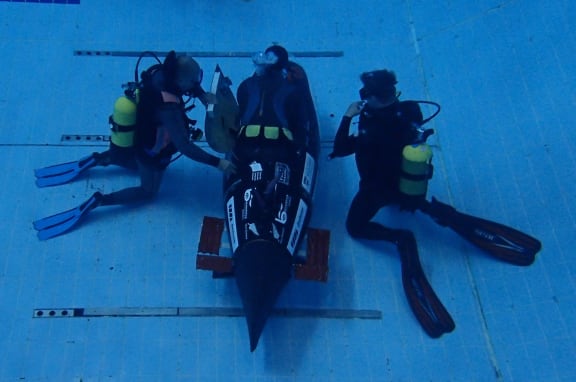
The diving team get the submarine ready for a practise run in a small, deep diving pool. Photo: RNZ / Alison Ballance
Iain Anderson says that propeller technology is well advanced, but the non-propeller category requires much more inventive thinking.
He says that while most teams use a tail that goes up and down, like a whale or dolphin tail, Taniwha uses fins, located on the top and bottom of the sub, that move rapidly back and forth.
Iain says their inspiration came from the leatherjacket fish, including an articulated tail that flexes left and right to turn the sub.
But he cautions that they haven’t been literal in how they have borrowed from nature.
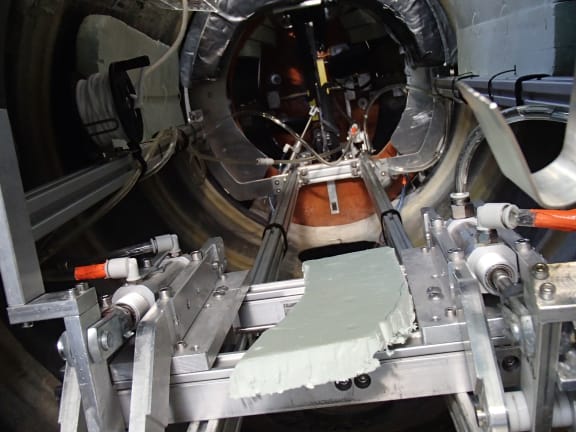
The interior of the Taniwha sub is a tight fit for the pilot, who has hydraulic controls to steer and brake, as well as pedals to power the sub. Photo: RNZ / Alison Ballance
Chris is the pilot, who has to endure the cramped interior of the small sub as he pedals and steers it.
For the 2016 race he has to be able to sprint for 100 metres, and then steer the sub through a slalom course to test its maneuverability.
Iain doesn’t see any immediate spin-offs from the submarine, except perhaps in the development of an underwater bicycle.
Instead, he sees it as launch-pad
“It’s a bit like Formula One. You don’t expect to mass produce a Formula One racing car, but you can test different things out in it on the track which can eventually find use in ordinary cars.”
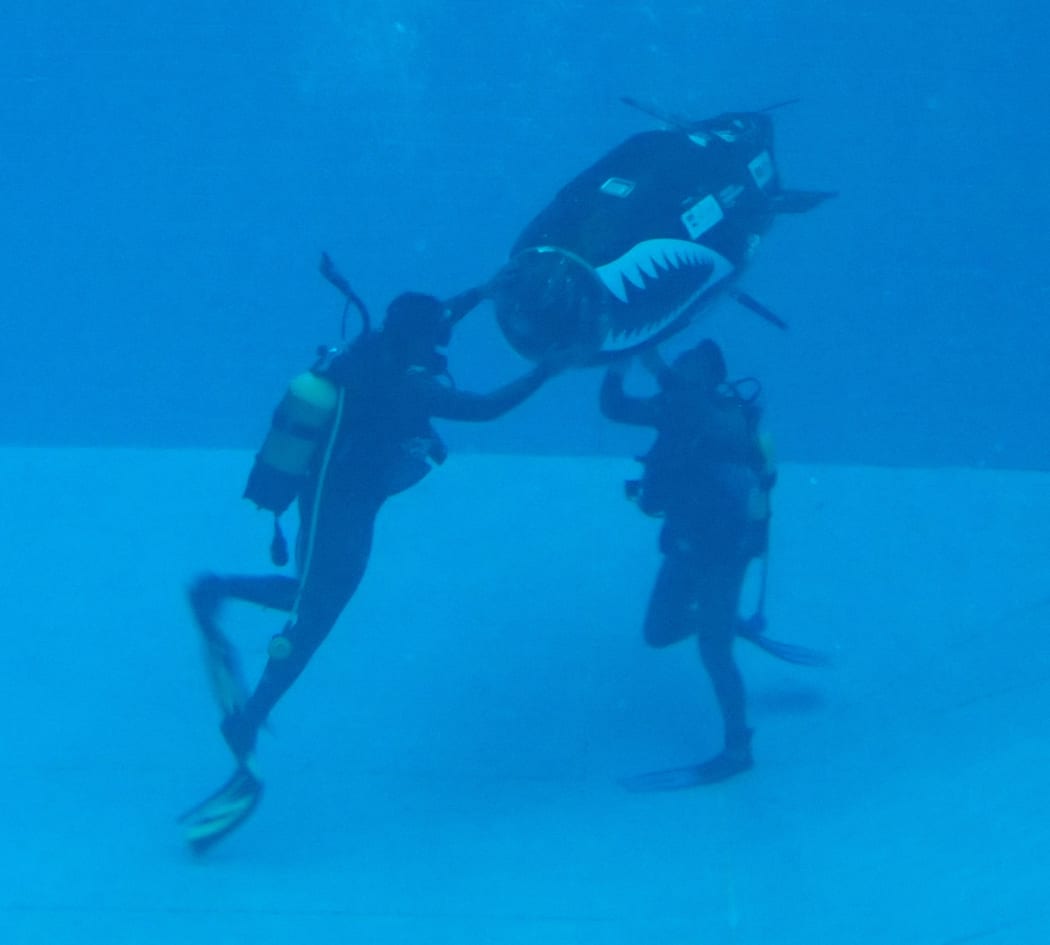
The diving support team lifts the submarine into position so that Chris, the pilot, can take it for a test drive. Photo: RNZ / Alison Ballance

